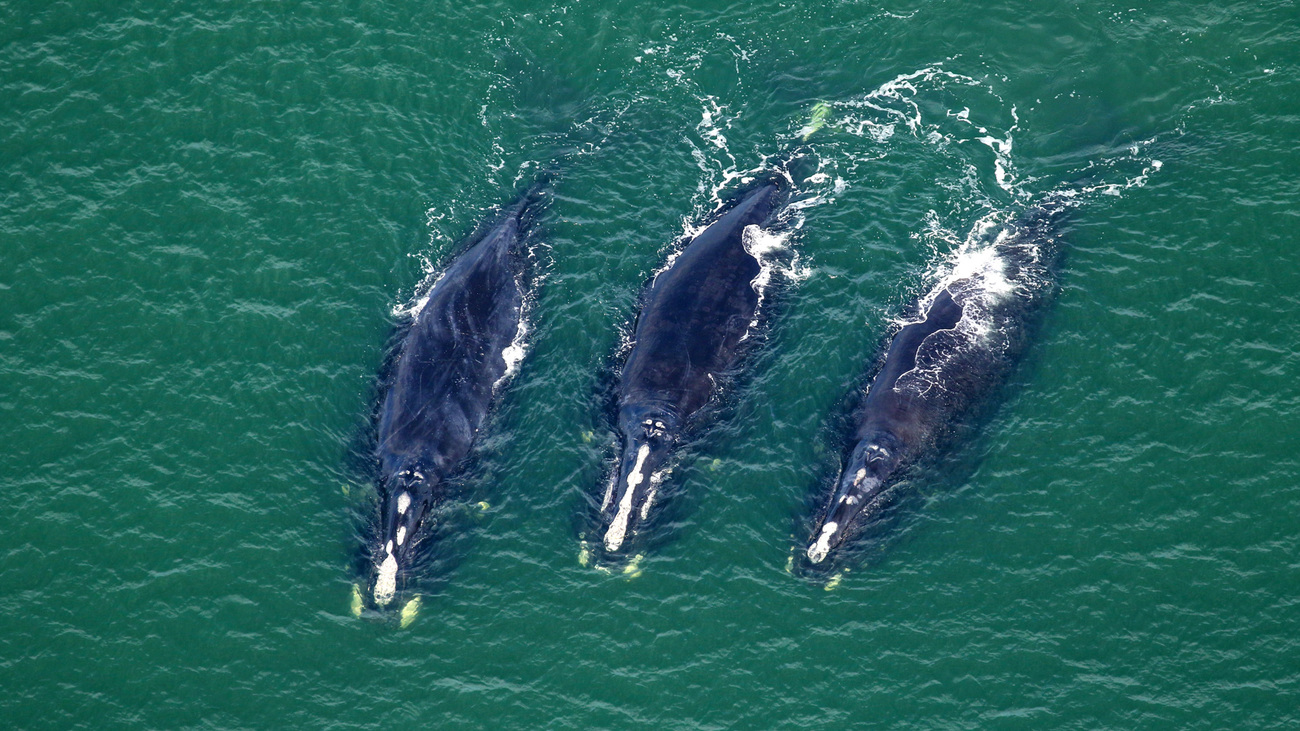Saving the North Atlantic right whale - North America
Don't fail our whalehow right whales got their name
how right whales got their name

North Atlantic right whales are on the brink of extinction, yet just over a decade ago, they were considered a conservation icon. They had finally rebounded after centuries of intense hunting. Back then, whalers began referring to them as “the right whales to hunt.” The name stuck and continues to this day to symbolize the violent history these animals have faced.
origins of the name
North Americans started calling them right whales around the early 1700s. Originally, the word “right” might have just meant “typical”, since at the time, these were common, ordinary whales; but over time, these slow-moving giants became widely known among whalers as the “right whales to hunt.”
Compared to other species, the right whale was an easy catch. It frequently swam close to the shore and tended to stay near the surface, where it was easy to spot and follow. And unlike many other whales, right whales usually floated after they were killed, thanks to all their blubber, making them easy to tow to shore.
Another reason why they were considered the “right whales to hunt” was because they were big moneymakers. The thick blubber of a single right whale could fill over 40 barrels of oil, which the colonists sold as fuel for oil lamps or boiled to make soap. Their baleens—those big bristles in their mouths that they use to filter food—were used to make corsets, hoop skirts, and other fashion items.
But right whales weren’t always known by this name. In the 1600s and early 1700s, North American whalers called them black whales, seven-foot-bone whales, rocknose whales, and various other names. During that same period, Europeans who hunted or scavenged these whales knew them by local names, such as the nordcaper (Dutch for “the whale from Norway’s North Cape”) or the sletbag (Icelandic for “the smooth-backed whale”).
a long history of hunting
Prior to whaling, experts estimate that the North Atlantic right whale population ranged between 9,000 and 21,000 individuals.
In Europe, whalers have been killing right whales since at least the 9th century, when Medieval Norse whalers hunted them for food. During the 1600s, thousands of right whales may have been killed, leaving just a few hundred in the waters around Europe by the end of the century.
There was still a robust population in the western Atlantic at this time. But over the next century, more and more hunters throughout the colonies set out in search of the so-called “right whale to hunt.” Whaling crews from New England to Florida likely slaughtered dozens or more a year up until the early 1900s, when right whale populations dropped so low that there was almost nothing left to hunt, and the practice died out. Of the thousands, or possibly tens of thousands of right whales that once roamed the Atlantic Ocean, fewer than 100 remained.
In 1935, an international agreement finally put an official end to the hunting of right whales, and since 1970, the North Atlantic right whale has been designated as an endangered species. Thanks to these protections, their numbers began slowly climbing upward over the ensuing decades.
But now that progress is being lost as right whales confront vessel strikes, entanglement in fishing lines, and a changing environment.
running out of time
IFAW is leading the way in addressing the two main threats to North Atlantic right whales today, which are vessel strikes and entanglements.
With tens of thousands of vessels entering busy ports each day, collisions with right whales are a frequent occurrence. To reduce these often-deadly collisions, IFAW has advanced vessel speed limits in critical habitats and helped to shift shipping lanes, but vessel strikes remain a major threat.
Today, an even greater threat comes from commercial fishing. By some estimates, up to 85 percent of right whales have at some point gotten entangled in fishing gear. Once entangled, the ropes tightly wrap around their bodies, cut into their skin, get stuck in their baleen plates, and weigh them down, leading to serious injuries and often a tortuous, drawn-out death. As a solution, IFAW works closely with fishermen, gear manufacturers, and policy makers to advance innovative on-demand gear to reduce ropes in the water and the risk of entanglement.
Right whales also contend with less visible threats, like noise pollution. Vessels, construction projects, and underwater drilling create high levels of underwater noise; these animals rely on sound to communicate with one another, find food, avoid predators, and navigate, and this disruptive underwater noise drowns out natural sounds and causes them stress. IFAW has identified a solution to make the seas quieter and safer for marine animals: reduced shipping speeds.
At the same time, climate change drives North Atlantic right whales into new habitats, likely in pursuit of prey that have shifted to new ranges. Even as they adapt to their changing environment, a drop in birth rates suggests that breeding females are struggling to find enough food to carry a pregnancy through to term.
In the face of all these challenges, there’s little time left to protect North Atlantic right whales from extinction. After centuries of slaughter, which earned these creatures the title of “right whales”—albeit, for all the wrong reasons—it’s now up to humans to make things right and help the species flourish again.
Related content
every problem has a solution, every solution needs support.
The problems we face are urgent, complicated, and resistant to change. Real solutions demand creativity, hard work, and involvement from people like you.